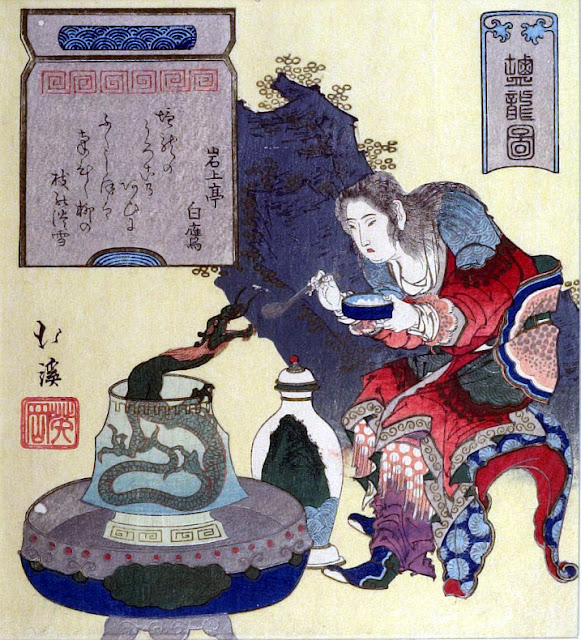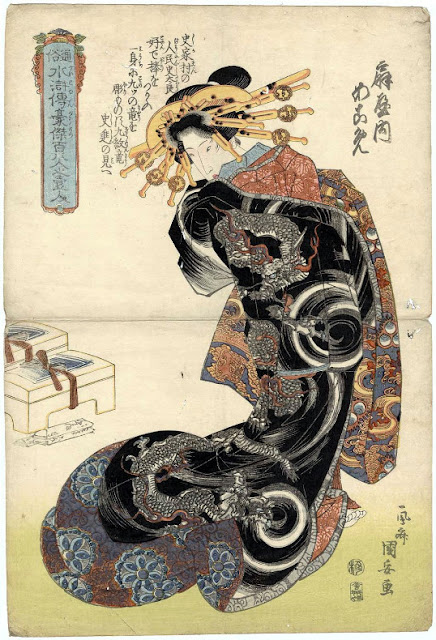 |
| Toshinobu II: Nitta no Shiro Tadatsune faces the Goddess of Mount Fuji and her dragon |
This is a triptych by Toshinobu II, which shows Nitta no Shiro Tadatsune facing the Goddess of Mount Fuji and her dragon in a cave on Mt. Fuji. Tadatsune’s followers were afraid to enter the cave but Nitta no Shiro took a torch and entered. The Goddess congratulates him on his bravery.
Shirai Toshinobu (1866-1903) was a student of Yoshitoshi, who gave him the name Toshinobu.
This is a very beautiful print, although one can claim that the depicted animal is not a dragon but a serpent. In art, however, the borderline between the two is vague. Otherwise, strictly, a dragon has limbs, a serpent does not.
The
name “Toshinobu” causes some confusion as to whom it really
refers, because Yoshitoshi had three students using that name, and
two of them signed with the same kanji characters
[年信].
I believe, however, that here we have a triptych by Shirai
Toshinobu,
who is sometimes called Yamazaki
Toshinobu II.



